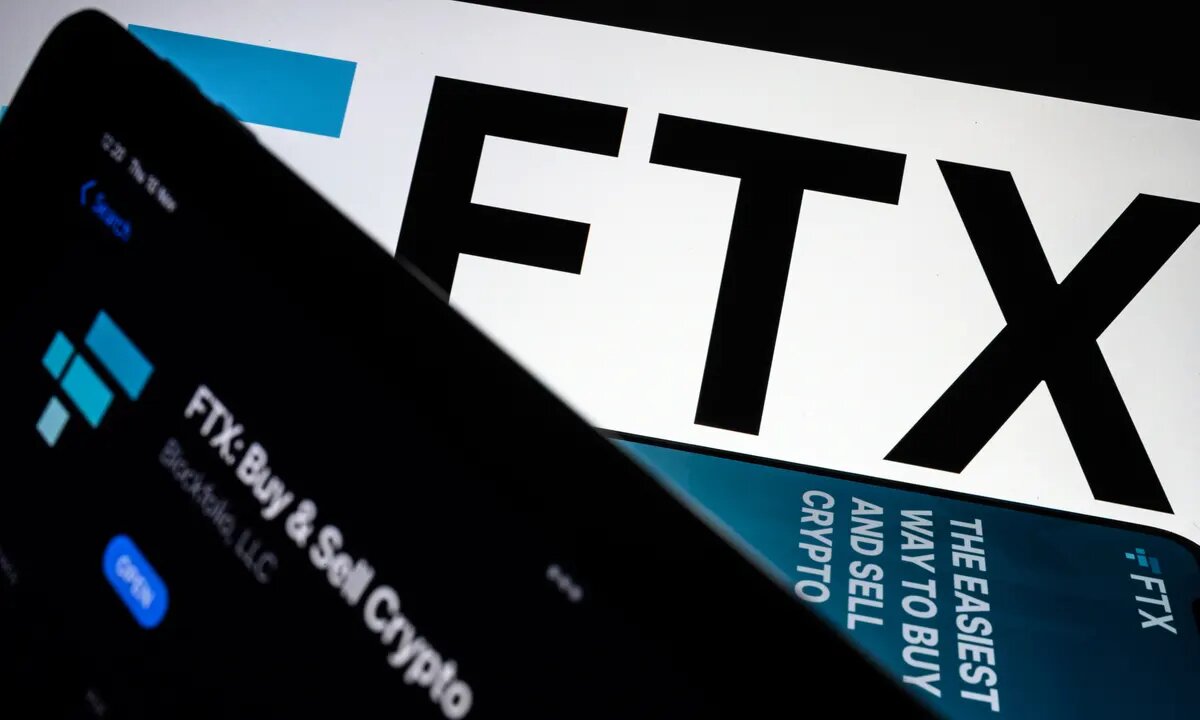Introduction
Welcome to the world of crypto trading! With the rapid growth and popularity of cryptocurrencies, more and more people are getting interested in exploring the opportunities offered by this digital asset class. But what exactly is crypto trading, and how does it work? In this article, we’ll delve into the basics of crypto trading, popular strategies, important factors to consider, risks involved, and tips to become a successful crypto trader.
Crypto trading, short for cryptocurrency trading, refers to the buying and selling of cryptocurrencies on various digital platforms. It involves speculating on price movements to make profits. The most common cryptocurrencies traded include Bitcoin, Ethereum, Ripple, and Litecoin, among others.
The rise of cryptocurrencies has disrupted traditional financial markets, offering individuals the chance to participate in a decentralized, borderless, and potentially lucrative marketplace. With no centralized authority governing these digital assets, crypto trading serves as an alternative investment option for people looking to diversify their portfolios and potentially earn a substantial return.
Unlike traditional financial markets, which operate during specific hours, the cryptocurrency market operates 24/7, providing ample opportunities for traders around the globe. The market’s liquidity and volatility offer the potential for substantial gains, attracting traders seeking short-term profits as well as long-term investors.
While crypto trading may seem complex and daunting at first, understanding the basics can help you navigate this exciting and dynamic space. In the next sections, we’ll explore the different types of crypto trading strategies, popular cryptocurrencies for trading, key factors to consider, risks associated with crypto trading, and tips for successful trading.
So, if you’re ready to dive into the world of crypto trading, fasten your seatbelt and get ready to embark on an exhilarating journey filled with potential opportunities and challenges!
What is Crypto Trading?
Crypto trading is the buying, selling, and exchanging of digital currencies, also known as cryptocurrencies, with the primary objective of making a profit. It involves speculating on the price movements of these digital assets in order to capitalize on potential gains. Unlike traditional trading in stocks or commodities, crypto trading takes place exclusively on digital platforms.
At its core, crypto trading revolves around the use of blockchain technology. Blockchain is a decentralized ledger that records all transactions and stores them in blocks. These blocks are then linked together in a chronological and immutable chain. Cryptocurrencies, such as Bitcoin and Ethereum, are built on this blockchain technology, allowing for secure and transparent transactions.
One of the key aspects of crypto trading is the high liquidity and volatility of the cryptocurrency market. Liquidity refers to the ability to quickly convert an asset into cash without impacting its market price. The cryptocurrency market is highly liquid, meaning that traders can easily buy and sell cryptocurrencies at any time.
Volatility, on the other hand, refers to the rapid and significant price fluctuations that occur in the cryptocurrency market. The prices of cryptocurrencies can change dramatically within a short period, presenting both opportunities and risks for traders. The high volatility allows skilled traders to take advantage of price movements and profit from buying low and selling high.
There are different types of crypto trading, including day trading, swing trading, and long-term investing. Day trading involves buying and selling cryptocurrencies within the same day, taking advantage of short-term price fluctuations. Swing trading, on the other hand, involves holding onto cryptocurrencies for a few days to a few weeks, capitalizing on medium-term price trends. Long-term investing, as the name suggests, involves holding cryptocurrencies for an extended period, with the belief that their value will increase over time.
It’s important to note that crypto trading is speculative in nature and carries a certain level of risk. The prices of cryptocurrencies are influenced by various factors such as market demand, regulatory changes, technological advancements, and investor sentiment. Traders need to carefully analyze these factors and make informed decisions based on thorough research and analysis.
Overall, crypto trading offers individuals the opportunity to participate in the exciting and potentially profitable world of digital currencies. It requires a combination of knowledge, skills, and discipline to navigate the market and make successful trades. In the next sections, we will explore different strategies, important factors to consider, and tips for successful crypto trading.
How Does Crypto Trading Work?
Crypto trading operates through digital platforms known as cryptocurrency exchanges. These exchanges provide a marketplace where individuals can buy, sell, and trade various cryptocurrencies. To understand how crypto trading works, let’s take a closer look at the process:
- Choosing a Cryptocurrency Exchange: The first step in crypto trading is selecting a reliable and secure cryptocurrency exchange. There are numerous exchanges available, each with its own features, fees, and user experience. It is important to research and compare different exchanges to find one that meets your specific needs.
- Creating an Account: Once you have chosen an exchange, you will need to create an account. This typically involves providing your personal information, verifying your identity, and setting up security measures such as two-factor authentication.
- Depositing Funds: After creating an account, you will need to deposit funds into your exchange wallet. Most exchanges accept fiat currencies (such as USD or EUR) as well as other cryptocurrencies. You can deposit funds using bank transfers, credit cards, or other accepted payment methods.
- Choosing a Cryptocurrency: With funds in your exchange wallet, you can now choose which cryptocurrency you want to trade. Popular options include Bitcoin (BTC), Ethereum (ETH), Litecoin (LTC), and Ripple (XRP), among others. It is important to research and analyze the chosen cryptocurrency before making a trading decision.
- Placing a Trade: Once you have selected the cryptocurrency, you can place your trade. This involves specifying the amount of cryptocurrency you want to buy or sell and the desired price. You can either place a market order, which executes the trade at the current market price, or a limit order, which allows you to set a specific price at which the trade will be executed.
- Executing the Trade: After placing the trade, the exchange will match your order with a buyer or seller on the platform. If your trade conditions are met, the transaction will be executed, and your account balance will be updated accordingly. The cryptocurrency you bought or sold will then be stored in your exchange wallet.
- Monitoring and Managing Trades: Crypto trading requires active monitoring of your trades and the market. Prices can fluctuate rapidly, and it is important to stay informed about market trends, news, and other factors that may impact the value of your chosen cryptocurrency. You may also set stop-loss orders or take-profit levels to manage your risk and potential profits.
- Withdrawing Funds: If you decide to sell your cryptocurrencies or make a withdrawal, you can request to transfer funds from your exchange wallet to your personal wallet or bank account. Each exchange may have different withdrawal procedures, including fees and withdrawal limits.
It’s essential to note that crypto trading involves risks, and it’s important to practice proper risk management and due diligence. Additionally, the process of crypto trading may vary slightly depending on the exchange and the specific features and functionalities it offers.
Overall, crypto trading provides individuals with the opportunity to actively engage in the world of digital currencies and potentially generate profits. It is an exciting and dynamic market, but it requires careful planning, research, and continuous monitoring to make informed trading decisions.
Types of Crypto Trading Strategies
When it comes to crypto trading, there are various strategies that traders employ to maximize their chances of success. Each strategy has its own approach and time frame, catering to different risk appetites and trading styles. Below are some of the common types of crypto trading strategies:
- Day Trading: Day trading involves executing multiple trades within a single day to take advantage of short-term price movements. Day traders closely monitor the market and rely on technical analysis to identify patterns and trends. They aim to profit from small price fluctuations and usually close all their positions by the end of the day. Day trading requires discipline, risk management, and the ability to make quick decisions.
- Swing Trading: Swing trading focuses on capturing medium-term price trends that last from a few days to several weeks. Swing traders analyze both technical and fundamental factors to determine the potential direction of a cryptocurrency. They aim to enter a trade at the beginning of an upswing or downswing and hold their positions until the trend exhausts. Swing trading requires patience, as positions are typically held for longer periods compared to day trading.
- Scalping: Scalping is a strategy that involves making numerous quick trades throughout the day to capitalize on small price differentials. Scalpers take advantage of the bid-ask spread, aiming to profit from the difference between the buying and selling prices. Scalping requires advanced technical analysis skills, a fast-paced trading approach, and access to high liquidity markets.
- HODLing: HODLing, derived from the misspelling of “hold,” refers to a long-term investment strategy where traders buy and hold cryptocurrencies for an extended period. HODLers believe in the long-term growth potential of cryptocurrencies and are less concerned with short-term price fluctuations. They withstand market volatility and focus on the overall upward trend of their chosen cryptocurrencies.
- Arbitrage: Arbitrage involves taking advantage of price discrepancies between different cryptocurrency exchanges. Traders buy a cryptocurrency from one exchange at a lower price and simultaneously sell it on another exchange where the price is higher. Arbitrage opportunities arise due to variations in liquidity and trading volumes across exchanges. Successful arbitrage requires quick execution, access to multiple exchanges, and careful consideration of transaction fees.
- Algorithmic Trading: Algorithmic trading involves the use of pre-programmed software or bots to execute trades based on specified rules and strategies. These bots analyze market data, indicators, and other factors to generate buy and sell signals automatically. Algorithmic trading can be particularly useful for high-frequency trading and efficient execution of trades.
It’s important to note that each trading strategy has its advantages and drawbacks, and there is no one-size-fits-all approach. Traders should consider their risk tolerance, trading experience, and market conditions when selecting a strategy. It’s also worth noting that combining multiple strategies or adapting them to changing market conditions can be a viable approach.
Successfully implementing a trading strategy requires consistent monitoring, risk management, and ongoing research. Traders should continuously educate themselves, stay informed about market trends and developments, and adapt their strategies as needed to stay ahead in the dynamic world of crypto trading.
Popular Cryptocurrencies for Trading
As the cryptocurrency market continues to evolve, numerous cryptocurrencies have emerged, each with its unique features and use cases. Some cryptocurrencies have gained significant popularity and become preferred choices for trading due to their market capitalization, liquidity, and potential for price volatility. Here are some of the popular cryptocurrencies for trading:
- Bitcoin (BTC): Bitcoin is the first and most well-known cryptocurrency, often referred to as digital gold. As the pioneer of blockchain technology, Bitcoin offers high liquidity and widespread acceptance. Its price movements are closely watched by traders globally, and it remains the dominant force in the cryptocurrency market.
- Ethereum (ETH): Ethereum is a decentralized platform that enables the creation of smart contracts and decentralized applications (DApps). Its native cryptocurrency, Ether, is the second-largest cryptocurrency by market capitalization. Ethereum’s innovative technology and active developer community contribute to its popularity for both trading and investment.
- Ripple (XRP): Ripple is a digital payment protocol designed to facilitate fast and low-cost cross-border transactions. It aims to bridge the gap between traditional financial institutions and blockchain networks. Ripple’s native cryptocurrency, XRP, is commonly traded due to its potential for rapid transactions and partnerships with major financial institutions.
- Litecoin (LTC): Created by Charlie Lee, a former Google engineer, Litecoin was introduced as a “lite” version of Bitcoin. It offers faster transaction confirmation times and a different hashing algorithm. Litecoin is popular among traders due to its established reputation and potential for price volatility.
- Bitcoin Cash (BCH): Bitcoin Cash is a cryptocurrency that resulted from a hard fork of the original Bitcoin network. It aimed to address scalability issues by increasing block size, allowing for faster and cheaper transactions. Bitcoin Cash offers an alternative for traders looking to transact with Bitcoin-like features but with improved scalability.
- Cardano (ADA): Cardano is a blockchain platform that aims to provide a secure and sustainable infrastructure for the development of decentralized applications. Its native cryptocurrency, ADA, has gained popularity due to its focus on academic research, peer-reviewed technology, and potential for scalability.
- Chainlink (LINK): Chainlink is a decentralized oracle network that aims to connect smart contracts on the blockchain with real-world data and external APIs. Chainlink’s LINK token has gained traction among traders due to its potential for enabling reliable and secure smart contract interactions.
- Binance Coin (BNB): Binance Coin is the native cryptocurrency of the Binance exchange, one of the largest cryptocurrency exchanges globally. BNB offers various utilities within the Binance ecosystem, including discounted trading fees and participation in token sales. The popularity of Binance has driven the demand for BNB as a trading asset.
It’s important to note that the cryptocurrency market is highly dynamic, and the popularity of cryptocurrencies for trading can change over time. New cryptocurrencies may emerge, and existing ones may face challenges or technological advancements that impact their market performance. Traders should stay updated with the latest news, conduct thorough research, and consider multiple factors before choosing cryptocurrencies for trading.
Key Factors to Consider in Crypto Trading
Crypto trading can be lucrative, but it also carries risks. To make informed trading decisions and increase your chances of success, it’s important to consider several key factors. By carefully evaluating these factors, you can develop a well-informed trading strategy. Here are some of the key factors to consider in crypto trading:
- Market Research and Analysis: Conduct thorough market research to understand the current trends, news, and developments in the cryptocurrency space. Stay updated with the latest information about the cryptocurrencies you are interested in trading. Analyze both fundamental and technical factors to identify potential opportunities and assess the overall market sentiment.
- Volatility and Liquidity: Consider the volatility and liquidity of a cryptocurrency before trading it. High volatility can offer potential profit opportunities but also increases the risk of losses. Liquidity is essential for entering and exiting trades with ease, ensuring that you can buy or sell the cryptocurrency at your desired price without significantly impacting the market.
- Risk Management: Implement effective risk management strategies to protect your capital and minimize potential losses. This includes setting stop-loss levels, diversifying your portfolio, and not risking more than you can afford to lose. Consider your risk tolerance and adjust your trading strategy accordingly.
- Security and Regulation: Cryptocurrencies can be vulnerable to security breaches and hacking attempts. Ensure that you choose reputable exchanges with a strong emphasis on security measures, such as two-factor authentication and cold storage for funds. Additionally, keep an eye on the regulatory environment surrounding cryptocurrencies, as changes in regulations can affect their value and trading conditions.
- Trading Fees and Costs: Consider the fees associated with trading on different cryptocurrency exchanges. Transaction fees, withdrawal fees, and other charges can significantly impact your profitability. Compare fee structures and choose exchanges that offer competitive rates without compromising on security and reliability.
- Market Order vs. Limit Order: Understand the difference between market orders and limit orders. Market orders are executed at the prevailing market price, while limit orders allow you to set a specific price at which you are willing to buy or sell. Each order type has its pros and cons, and choosing the right order type depends on your trading strategy and market conditions.
- Emotional Control: Cryptocurrency markets can be highly volatile, leading to rapid price fluctuations. It’s important to manage your emotions and avoid making impulsive trading decisions based on fear or greed. Develop a trading plan, stick to your strategy, and avoid letting emotions dictate your actions.
- Technical Analysis Tools: Utilize various technical analysis tools, such as charts, indicators, and patterns, to analyze price movements and identify potential entry and exit points. Technical analysis can provide insights into market trends and help you make more informed trading decisions. Familiarize yourself with different technical analysis methods and choose the ones that align with your trading style.
By considering these key factors and taking a systematic approach to your crypto trading, you can enhance your chances of success and navigate the dynamic and exciting world of cryptocurrencies more confidently.
Crypto Trading Risks and Security
While crypto trading presents significant opportunities for profit, it also carries various risks and security concerns. It’s crucial to be aware of these risks and take appropriate measures to protect your investments. Here are some of the key risks and security considerations in crypto trading:
- Volatility: Cryptocurrencies are known for their price volatility, which can lead to large price swings within a short period. This volatility can result in substantial profits, but it also increases the risk of significant losses. Traders should carefully assess their risk tolerance and implement risk management strategies to mitigate potential losses.
- Lack of Regulation: The cryptocurrency market is relatively new and largely unregulated compared to traditional financial markets. This lack of regulation can expose investors to scams, fraudulent activities, and market manipulation. It’s important to conduct thorough research and choose reputable exchanges that prioritize security and regulatory compliance.
- Security Breaches: The digital nature of cryptocurrencies makes them vulnerable to security breaches and hacking attempts. Exchanges and wallets can be targeted, leading to the loss of funds. It is essential to choose exchanges and wallets with robust security measures, such as two-factor authentication, encryption, and cold storage for funds.
- Phishing and Scams: Traders need to be vigilant about phishing attempts and scams in the cryptocurrency space. Cybercriminals may pose as legitimate individuals or platforms to deceive traders into revealing sensitive information or sending funds. Be cautious of unsolicited emails, social media messages, and suspicious websites. Always verify the authenticity of the source before taking any action.
- Liquidity Risks: Market liquidity can affect the ease of buying or selling cryptocurrencies at desired prices. Illiquid markets may result in slippage, where the executed trade occurs at a different price than expected. Traders should consider liquidity levels, particularly when trading less popular or low-cap cryptocurrencies, as it may impact the ability to enter or exit positions smoothly.
- Market Manipulation: The relatively small size and lack of regulation in the cryptocurrency market make it susceptible to market manipulation. Whales or large traders can influence prices and create artificial demand or supply. Traders should be aware of potential price manipulation and utilize multiple sources of information when making trading decisions.
- Operational Risks: Technical glitches, server outages, or exchange failures can disrupt trading activities and hinder access to funds. It’s important to choose exchanges with a reliable track record and contingency plans in place. Additionally, maintaining up-to-date security software, backing up private keys and utilizing hardware wallets can help protect against operational risks.
- Regulatory Changes: Regulations on cryptocurrencies are still evolving and can vary by jurisdiction. Changes in regulations, such as government bans or restrictions, can impact the value and trading conditions of cryptocurrencies. Traders should stay informed about regulatory developments and adjust their strategies accordingly.
By being aware of these risks and implementing necessary security measures, traders can navigate the crypto trading landscape with greater confidence and protect their investments. It’s essential to stay informed about the latest security practices, stay updated on industry news, and exercise caution when entering the cryptocurrency market.
Tips for Successful Crypto Trading
Crypto trading can be a rewarding endeavor, but it requires knowledge, experience, and discipline. To increase your chances of success in this dynamic market, consider the following tips:
- Education and Research: Continuously educate yourself about cryptocurrencies, blockchain technology, and the factors that influence the market. Stay up to date with news, trends, and developments in the crypto space. Conduct thorough research before making any trading decisions, and rely on reliable sources of information.
- Develop a Trading Plan: Establish a clear trading plan with well-defined goals, risk tolerance, and strategies. Set realistic expectations and stick to your plan, avoiding impulsive trading decisions driven by emotions. A trading plan serves as a roadmap and helps you make disciplined and informed trading decisions.
- Practice Risk Management: Implement effective risk management techniques to protect your capital. Use stop-loss orders to limit potential losses and take-profit orders to secure profits. Diversify your portfolio by investing in multiple cryptocurrencies, and only risk what you can afford to lose. Avoid overexposure to a single asset.
- Technical and Fundamental Analysis: Utilize both technical analysis and fundamental analysis to make informed trading decisions. Technical analysis involves studying historical price patterns and indicators to predict future price movements. Fundamental analysis focuses on evaluating the intrinsic value of a cryptocurrency based on underlying factors such as technology, adoption, and market demand.
- Set Realistic Expectations: Understand that crypto trading is not a guaranteed way to get rich quickly. Set realistic expectations and avoid falling for get-rich-quick schemes. Crypto markets can be highly volatile, and it’s important to have a long-term perspective rather than focusing solely on short-term price movements. Patience and perseverance are key.
- Emotional Control: Emotions can cloud judgment and lead to impulsive trading decisions. Learn to manage your emotions and avoid making decisions based on fear or greed. Stick to your trading plan, rely on analysis, and remain disciplined in your approach.
- Start Small: If you’re new to crypto trading, start with a small investment and gradually increase your exposure as you gain experience and confidence. This allows you to learn from your mistakes and minimize potential losses. Remember that trading is a skill that is developed over time.
- Stay Secure: Prioritize security when engaging in crypto trading. Choose reputable exchanges with strong security measures, such as two-factor authentication and cold storage for funds. Use hardware wallets to store your cryptocurrencies securely. Be cautious of phishing attempts and scams and regularly update your security software.
- Continuous Learning: The crypto market is evolving rapidly, and it’s important to stay updated with the latest trends, technologies, and strategies. Join online communities, follow reputable traders, and engage in discussions to expand your knowledge and learn from others’ experiences. Be open to adapting your strategies as market conditions change.
- Manage Expectations: Understand that losses are part of trading. Accept that not every trade will be profitable, and learn from your mistakes. It’s important to maintain a realistic mindset and not be discouraged by setbacks. Focus on continuous improvement and strive for consistency in your trading approach.
Remember that successful crypto trading takes time and effort. It requires continuous learning, adaptability, and the ability to navigate the market’s inherent volatility. By applying these tips and developing sound trading practices, you can enhance your chances of success in the exciting world of crypto trading.
Tools and Platforms for Crypto Trading
When it comes to crypto trading, there are various tools and platforms available to assist traders in analyzing the market, executing trades, and managing their portfolios. These tools and platforms provide valuable features and functionalities to enhance trading efficiency and decision-making. Here are some of the commonly used tools and platforms for crypto trading:
- Cryptocurrency Exchanges: Crypto exchanges are online platforms where traders can buy, sell, and trade cryptocurrencies. Some popular exchanges include Binance, Coinbase, Kraken, and Bitfinex. These exchanges offer intuitive interfaces, advanced trading features, and a wide range of cryptocurrencies to choose from. It’s important to choose reputable exchanges with good security measures and high liquidity.
- TradingView: TradingView is a widely used platform for technical analysis. Traders can access real-time charts, indicators, and drawing tools to analyze price movements and identify trends. The platform provides customizable layouts, a social community for sharing and discussing ideas, and the ability to backtest trading strategies.
- CoinMarketCap: CoinMarketCap is a popular website that provides information about the market capitalization, trading volume, and price of various cryptocurrencies. It allows traders to track the performance of cryptocurrencies, compare their statistics, and access historical data. CoinMarketCap is a valuable resource for conducting research and staying informed about the overall market trends.
- CoinTracking: CoinTracking is a portfolio management tool that helps traders track their cryptocurrency holdings, trades, and profits/losses. The platform provides useful features such as tax reporting, real-time balance sheets, and performance analysis. CoinTracking offers integration with various exchanges and wallets, making it convenient for users to sync their transaction data automatically.
- Crypto News Aggregators: Crypto news aggregators, such as CoinDesk, Cointelegraph, and CryptoPanic, curate news and articles from various sources in the crypto space. These platforms provide up-to-date information about market developments, regulatory changes, and industry trends. Staying informed through news aggregators can help traders make more informed decisions.
- Arbitrage Tools: Arbitrage tools, such as CryptoCompare and CoinGecko, help traders identify price discrepancies across different cryptocurrency exchanges. These tools scan multiple platforms, analyze price spreads, and provide information about potential arbitrage opportunities. Traders can leverage these tools to take advantage of price differences and execute profitable trades.
- Hardware Wallets: Hardware wallets, such as Ledger and Trezor, provide secure offline storage for cryptocurrencies. These physical devices store private keys offline, protecting them from online threats and hacking attempts. Hardware wallets offer an extra layer of security, making them a preferred choice for traders who want to keep their digital assets safe.
- Social Trading Platforms: Social trading platforms, like eToro and ZuluTrade, allow traders to follow and copy the trades of successful traders. These platforms provide insights into the trading activities and performance of experienced traders, allowing novice traders to learn from their strategies and potentially replicate their success.
These are just a few examples of the tools and platforms available for crypto trading. Each trader may have specific preferences based on their trading style and needs. It’s important to explore and experiment with different tools, taking advantage of the functionalities they offer to enhance your trading experience and potentially improve your results.
Conclusion
Crypto trading offers individuals the opportunity to participate in the exciting and potentially profitable world of cryptocurrencies. By understanding the fundamentals of crypto trading, exploring different strategies, considering key factors, and utilizing the right tools, traders can navigate this dynamic market with greater confidence.
It is essential to approach crypto trading with a well-defined plan, taking into account risk management techniques and continuous learning. Education and research play a significant role in staying informed about the latest trends, news, and developments that impact the market.
Risks associated with crypto trading, such as volatility, security breaches, and the lack of regulation, should not be overlooked. Traders must prioritize security measures, choose reputable exchanges and wallets, and stay vigilant against phishing attempts and scams.
Successful crypto trading also requires emotional control, realistic expectations, and the ability to adapt to changing market conditions. Implementing technical and fundamental analysis, utilizing risk management strategies, and diversifying portfolios can help traders make informed decisions and manage their capital effectively.
Lastly, the crypto trading landscape is supported by a variety of tools and platforms that assist traders in analyzing the market, executing trades, and managing their portfolios. Understanding the functionality of these tools and selecting the ones that best align with individual trading needs can further enhance trading efficiency.
Overall, crypto trading offers a rewarding opportunity for those willing to learn, adapt, and take calculated risks. By following these tips and continuously honing your skills through practice and education, you can navigate the world of crypto trading with confidence and increase your chances of success.

























